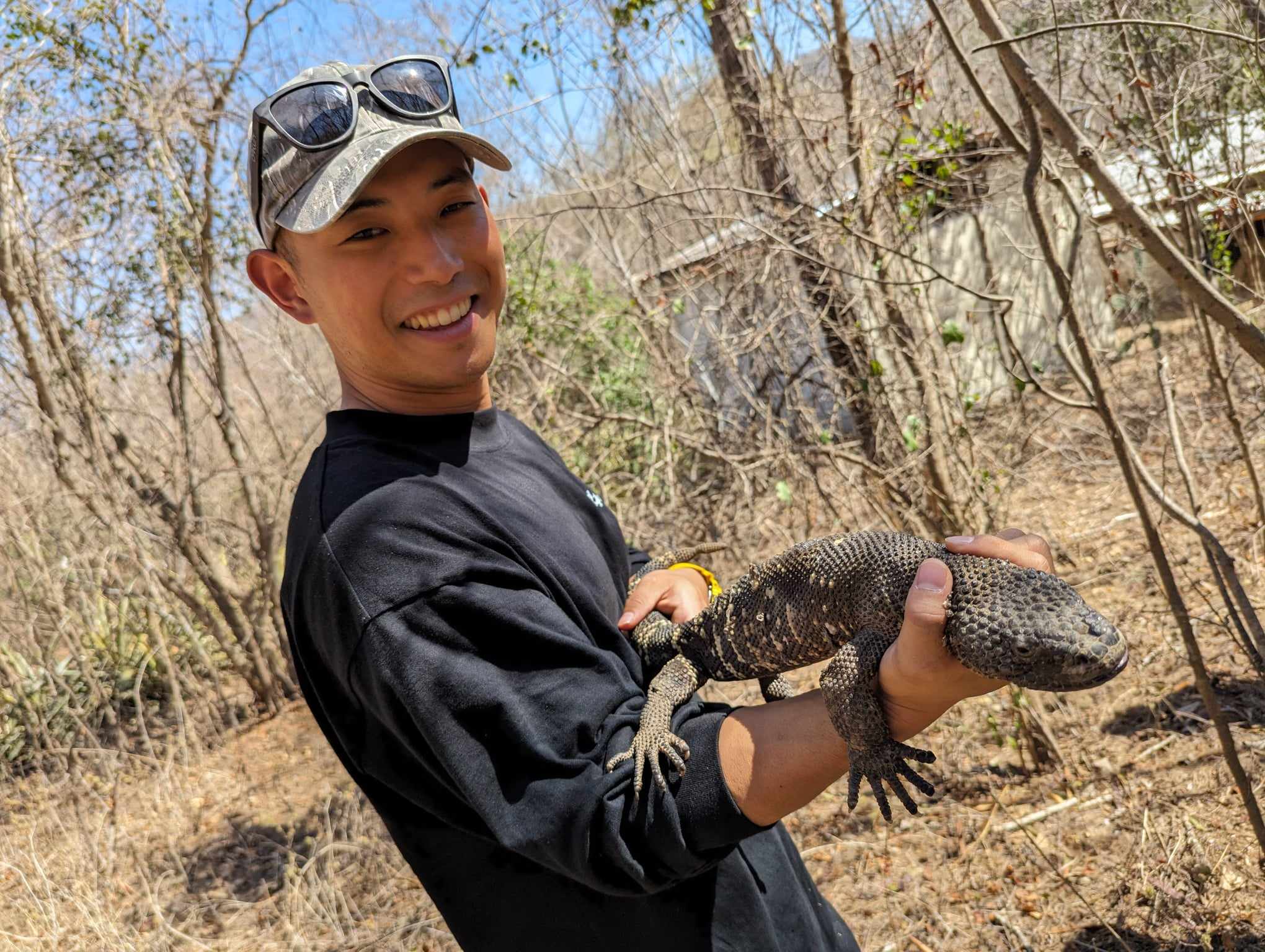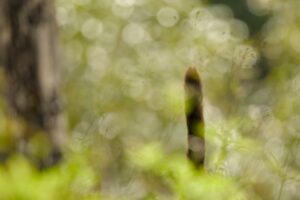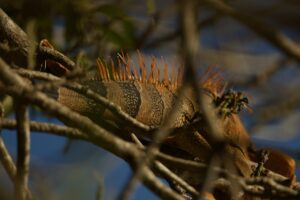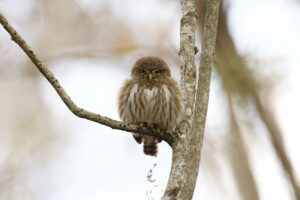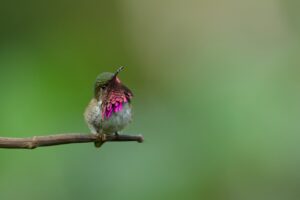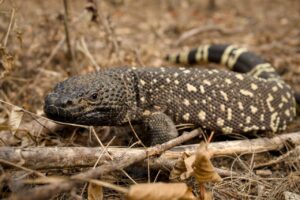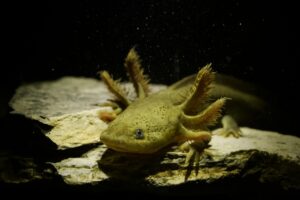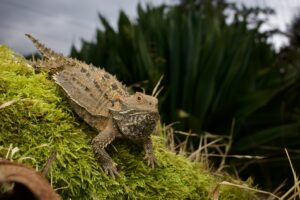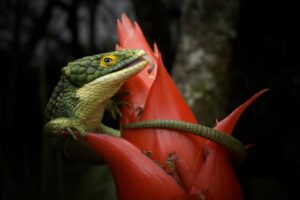Introduction
In this article, we’ll explore the fascinating encounter with a unique creature during harping on Ishigaki Island – the orange-hued Sakishima Habu(Protobothrops elegans). While the Sakishima Habu(Protobothrops elegans) typically sports a grayish hue, approximately one in ten individuals surprises observers with a striking orange coloration. Let’s delve into the captivating world of the orange Sakishima Habu(Protobothrops elegans).
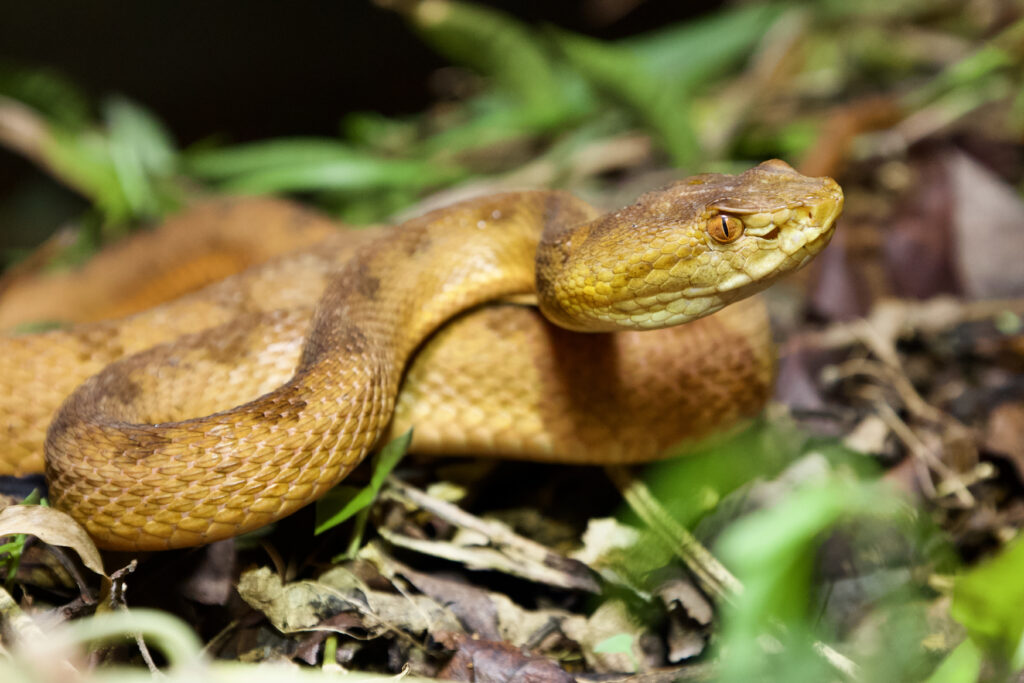
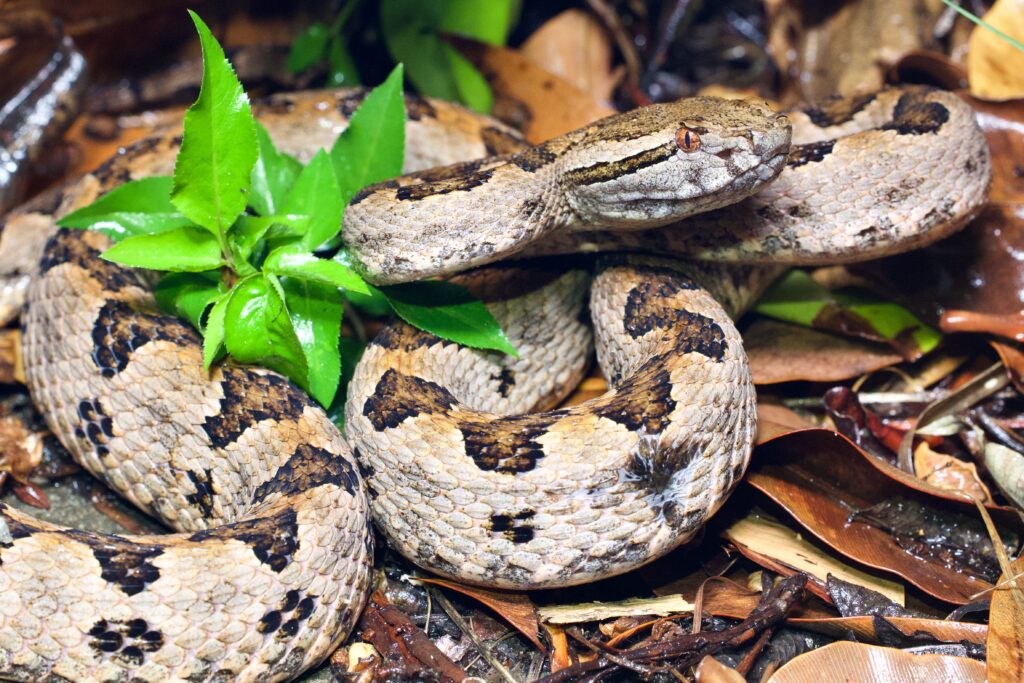
Distinctive Appearance
The Sakishima Habu(Protobothrops elegans) measures around 60-120 cm, showcasing a slender and elegant physique. Despite being a smaller member of the habu family adapted to the natural environment of the Yaeyama Islands, it shares its distinctive charm with other habus found in the Okinawa and Amami Islands, especially the Protobothrops flavoviridis. When coiled, it’s just slightly larger than an adult’s clenched fist.
Vibrant Aesthetics
Highlighted features include a triangular head, a slender neck, and captivating vertical pupils. Its back is adorned with alternating dark-brown markings on a background of brownish-gray or ashy-brown, sometimes featuring amber-colored patterns.
Ecology and Habitat
This nocturnal serpent can be found not only along forested streams but also in fields and near human dwellings. Its diet mainly consists of frogs and lizards, and it lays 5 to 13 eggs around July.
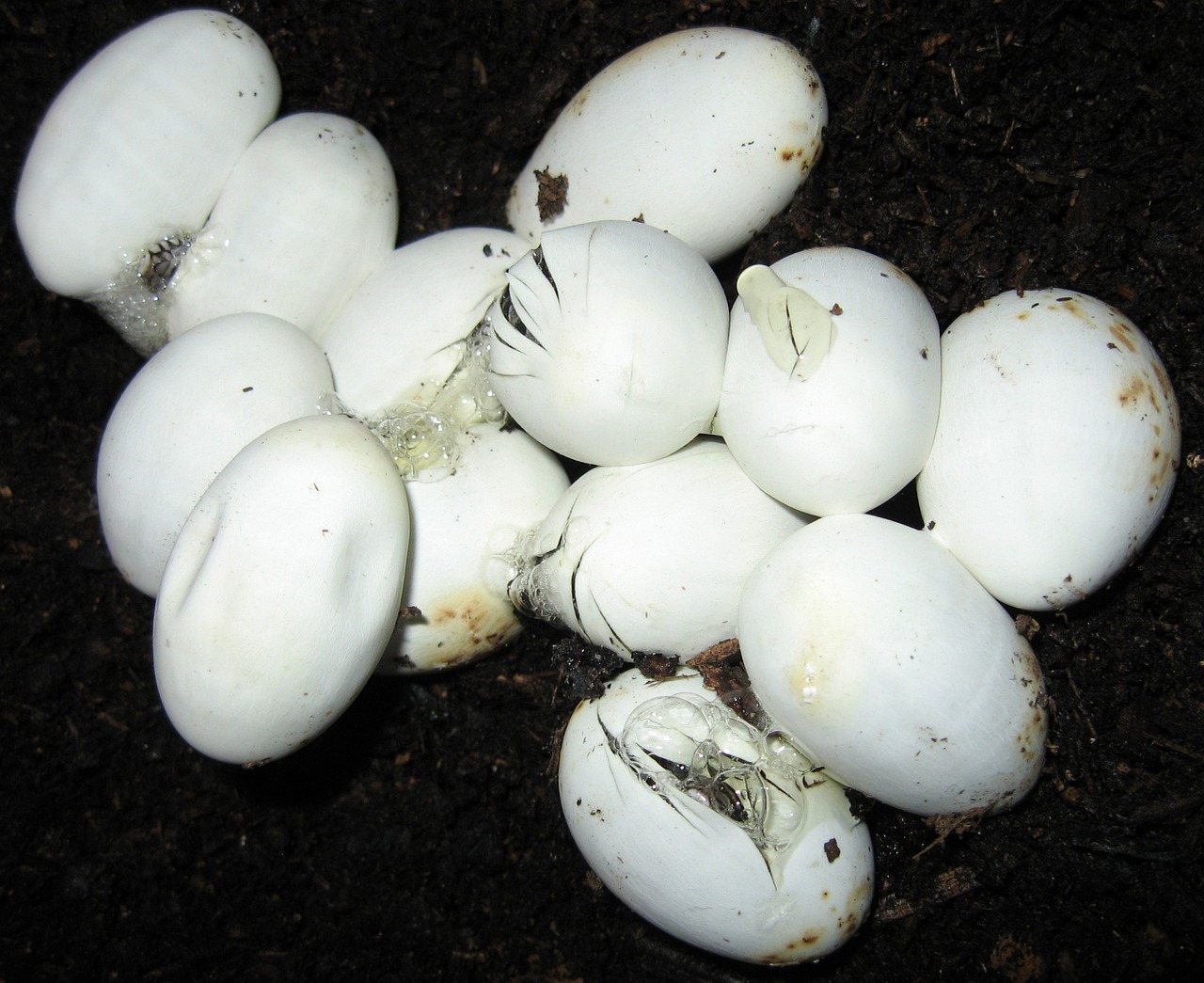
Venom and Caution
While the Sakishima Habu(Protobothrops elegans) possesses hemorrhagic venom, its toxicity is relatively low. Serum treatment is rarely required, but caution is still essential due to potential swelling and complications if bitten.
Distribution and Conservation
While naturally occurring in the Yaeyama Islands, some individuals have been introduced and established in Okinawa Island and the southern part of Itoman City. Proper knowledge and vigilance are crucial for their conservation.
Anatomical Peculiarities
Notable features include distinct keels on body scales, characteristic dark-brown markings on the back, large orange irises, and movable fangs on the upper jaw. These traits classify the Sakishima Habu(Protobothrops elegans) as a member of the pit viper family, known for its venom-injecting fangs.
Conclusion: The Mystique of the Sakishima Habu(Protobothrops elegans)
As a native Japanese species, the Sakishima Habu(Protobothrops elegans)’s beauty and unique characteristics make it a subject of interest. Its presence, whether coiled along forest streams or venturing near human habitats, holds an artistic allure. While its venom may be less potent, the potential for swelling and the scientific intrigue surrounding its anatomy add layers to its mystique.
Found not only in the Yaeyama Islands but also in Okinawa and the southern part of Itoman City, the Sakishima Habu(Protobothrops elegans) captures the attention of nature enthusiasts and conservationists alike. Recognizing the importance of the Sakishima Habu(Protobothrops elegans) in Japan’s ecosystems and biodiversity, this article invites readers to explore the wonder of the Japanese endemic ORANGE VIPER. Search for this marvel and witness the miracles of Japan’s natural world.

